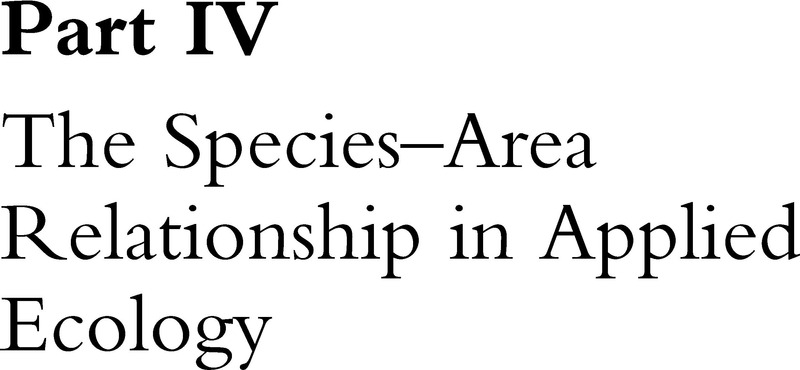Book contents
- The Species–Area Relationship
- Ecology, Biodiversity and Conservation
- The Species–Area Relationship
- Copyright page
- Contents
- Contributors
- Foreword
- Preface
- Part I Introduction and History
- Part II Diversity–Area Relationships: The Different Types and Underlying Factors
- Part III Theoretical Advances in Species–Area Relationship Research
- Part IV The Species–Area Relationship in Applied Ecology
- Part V Future Directions in Species–Area Relationship Research
- Index
- References
Part IV - The Species–Area Relationship in Applied Ecology
Published online by Cambridge University Press: 11 March 2021
- The Species–Area Relationship
- Ecology, Biodiversity and Conservation
- The Species–Area Relationship
- Copyright page
- Contents
- Contributors
- Foreword
- Preface
- Part I Introduction and History
- Part II Diversity–Area Relationships: The Different Types and Underlying Factors
- Part III Theoretical Advances in Species–Area Relationship Research
- Part IV The Species–Area Relationship in Applied Ecology
- Part V Future Directions in Species–Area Relationship Research
- Index
- References
Summary

- Type
- Chapter
- Information
- The Species–Area RelationshipTheory and Application, pp. 319 - 456Publisher: Cambridge University PressPrint publication year: 2021

